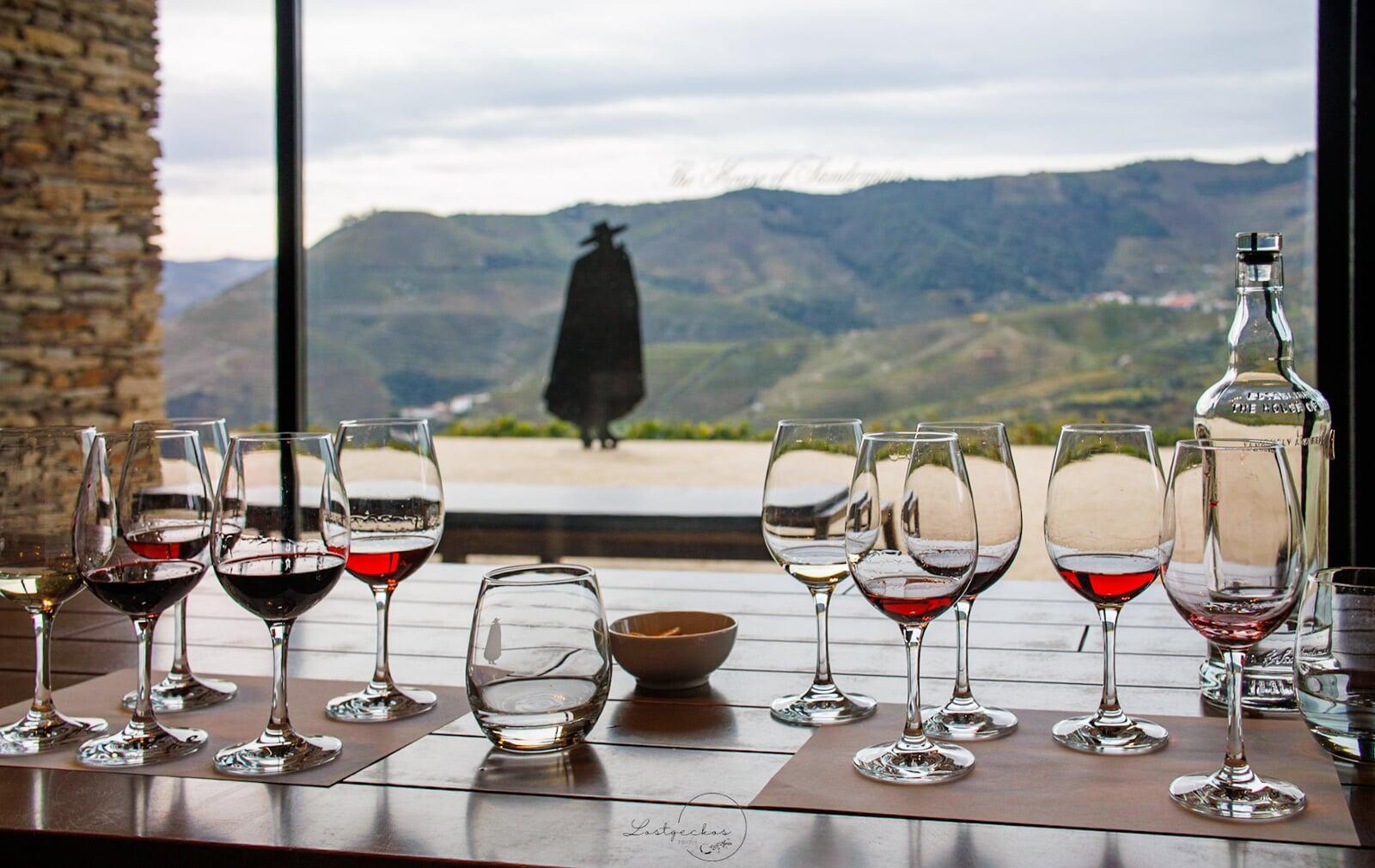We spent our last week in Portugal in Porto, and when in Porto, it is obligatory to visit the Douro Valley, Porto’s backyard and the holy land of port wine. Skipping it would be like going to Paris and ignoring the Eiffel tower. Illegal. Immoral. Not us.
Now, let’s get one thing straight: I'm not exactly what you'd call a wine connoisseur. My expertise extends to being able to distinguish red from white, and knowing that if sangria is on the menu, I'm ordering it. Twice.
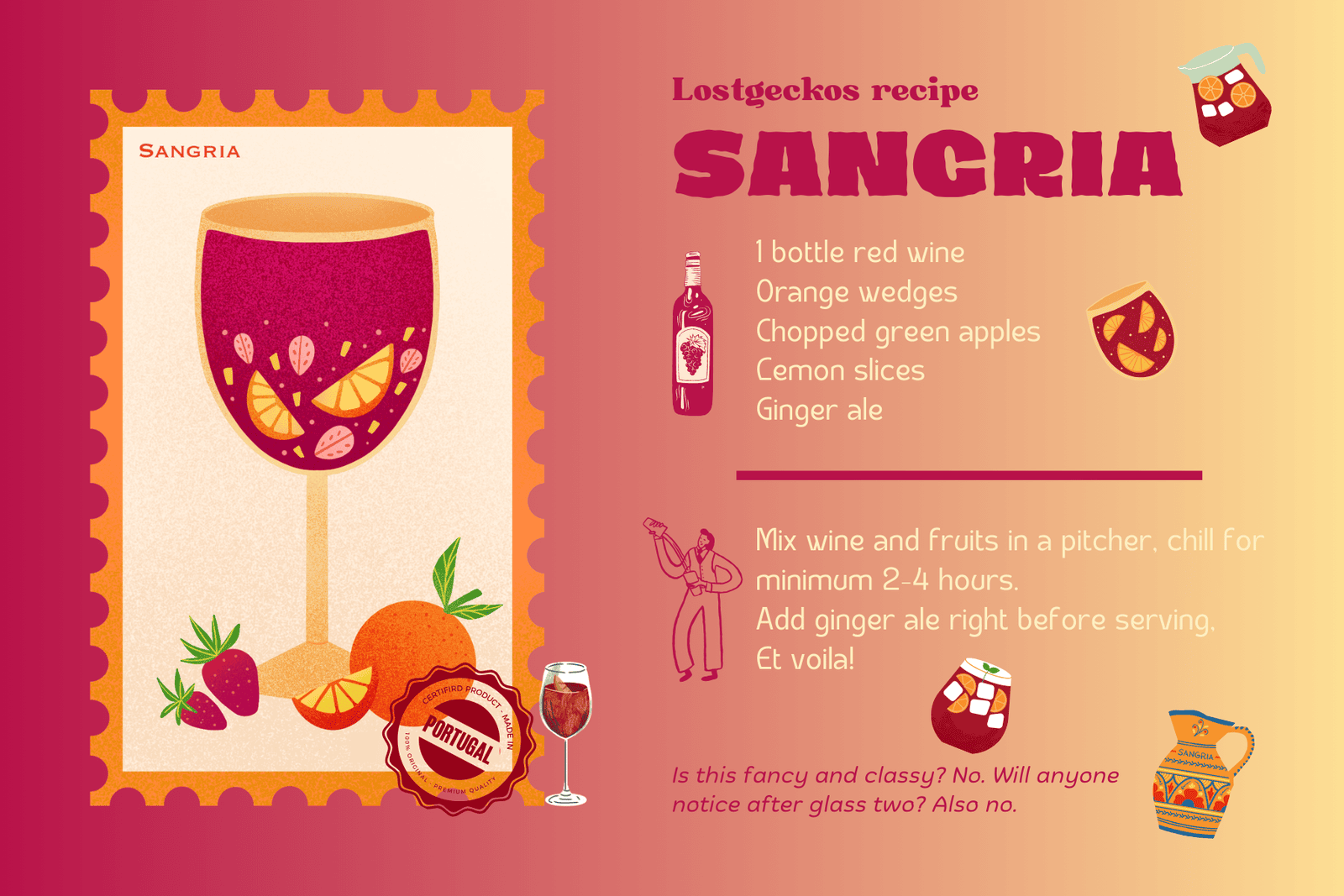
However, despite of my lack interest of wine, I was still looking forward to visit one of the most iconic wine regions in the world-the Douro valley. Douro valley is one of the UNESCO world heritage sites, home to one of the world’s oldest wine regions, dating back to the 18th century. The view of this valley is an absolute stunner, famed for its terraced vineyards, which reminded me a lot of Indonesian padi fields back home, and a river in between. Fun fact #1: the Douro River is called the "River of Gold," which is fitting because it flows through a valley that’s liquid gold for wine lovers.
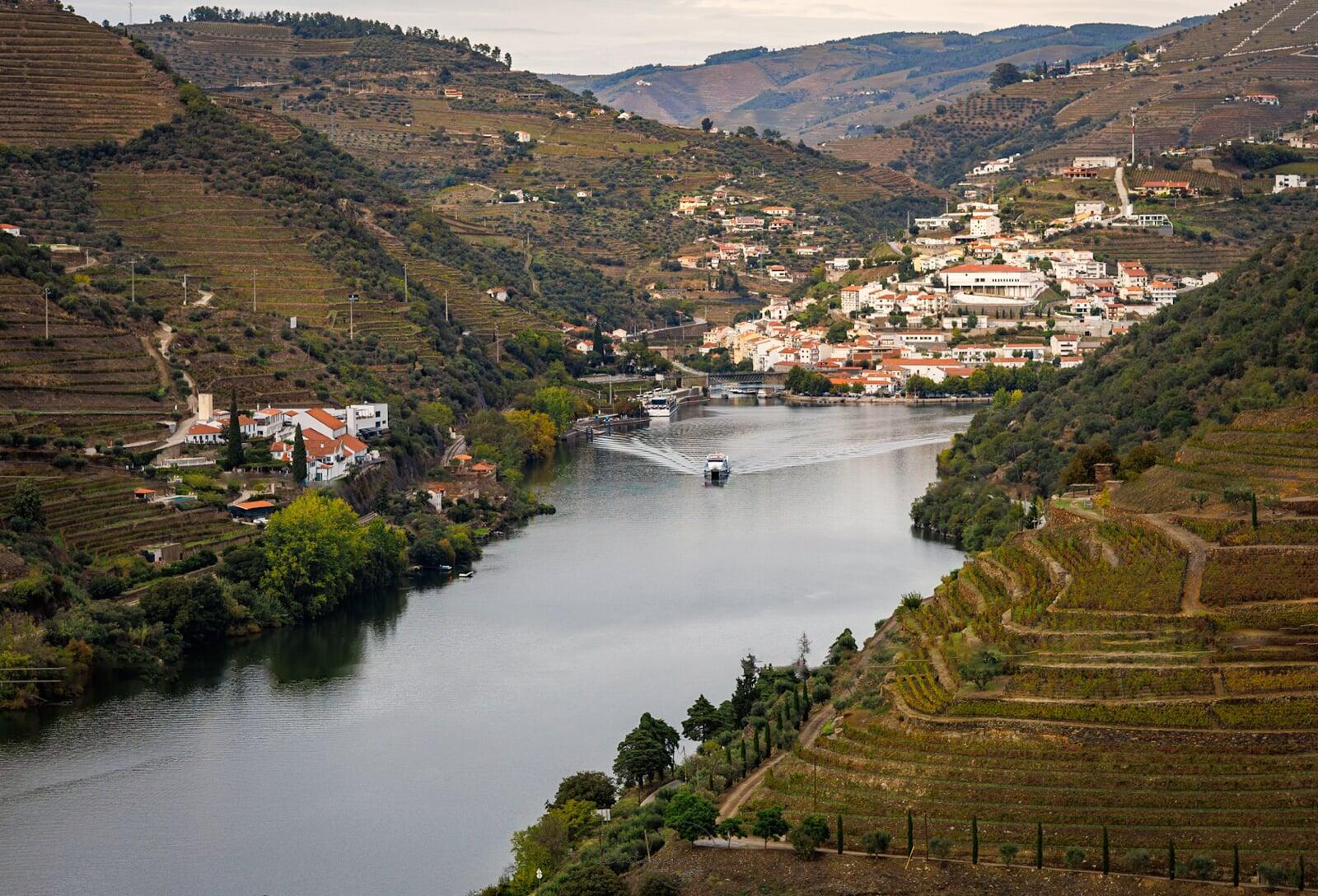
Yep, I’ll be throwing some funfacts in this posting, never planned for this blog to ever be informative and educative, but here we are.
Fun fact #2: there are tons of guided tour from Porto that allow you to just sit, enjoy the view, and drink.Wow, look at me, throwing second funfact already, I’m on fire!
We could’ve booked a cushy winery tour like normal tourists, but noooo, we decided to hit the road with our rented Fiat 500 that had approximately the same horsepower as a kitchen blender, instead. "It’s not that far and we're not planning to drink that much anyway," I declared with the misplaced confidence of someone who has never once accurately predicted their proneness to chaos and misfortunes.
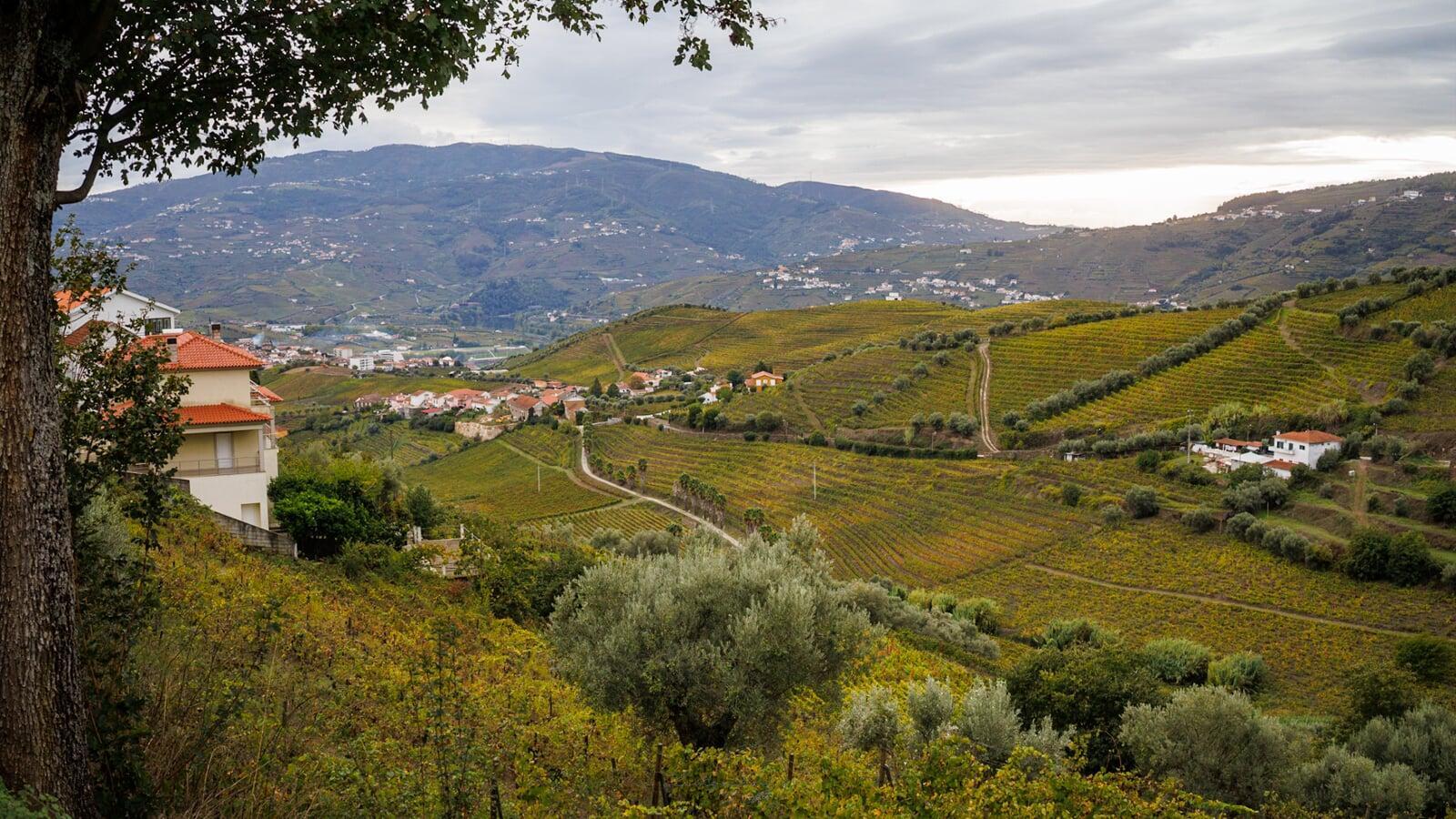
The journey began smoothly enough. Portuguese highways are generally well-maintained, and since we were traveling during low season, traffic wasn't terrible—if you ignored the parade of industrial trucks that seemed to stage a "Biggest Vehicle in Europe" parade around us.
These weren't just trucks, you guys. They were Optimus Prime's extended family members, each sporting more wheels than I have fingers and moving with the kind of confidence that comes from knowing you're the biggest thing on the road. Nico had to floor our tiny Fiat (which although it's cute and zippy, it's 100% not built for this nonsense) just to avoid becoming a decorative hood ornament. Every rearview glance felt like we were starring in Fast & Furious: Budget Edition. I’m not saying I thought I’d die, but I had the chance to mentally drafting my obituary: “She bet on a Fiat and lost" while clutching on my seatbelt.
Miraculously, we hit Pinhão without becoming a highway statistic. The view as soon as we get off the highway was absolutely gorgeous with astonishing bridges. Oh wow, not only throwing funfacts, I also use big words today. This must be my THC soda speaking. Anyhoo, back to our Douro run, we stopped every five minutes for photos, which wouldn’t be possible if we took a guided tour.
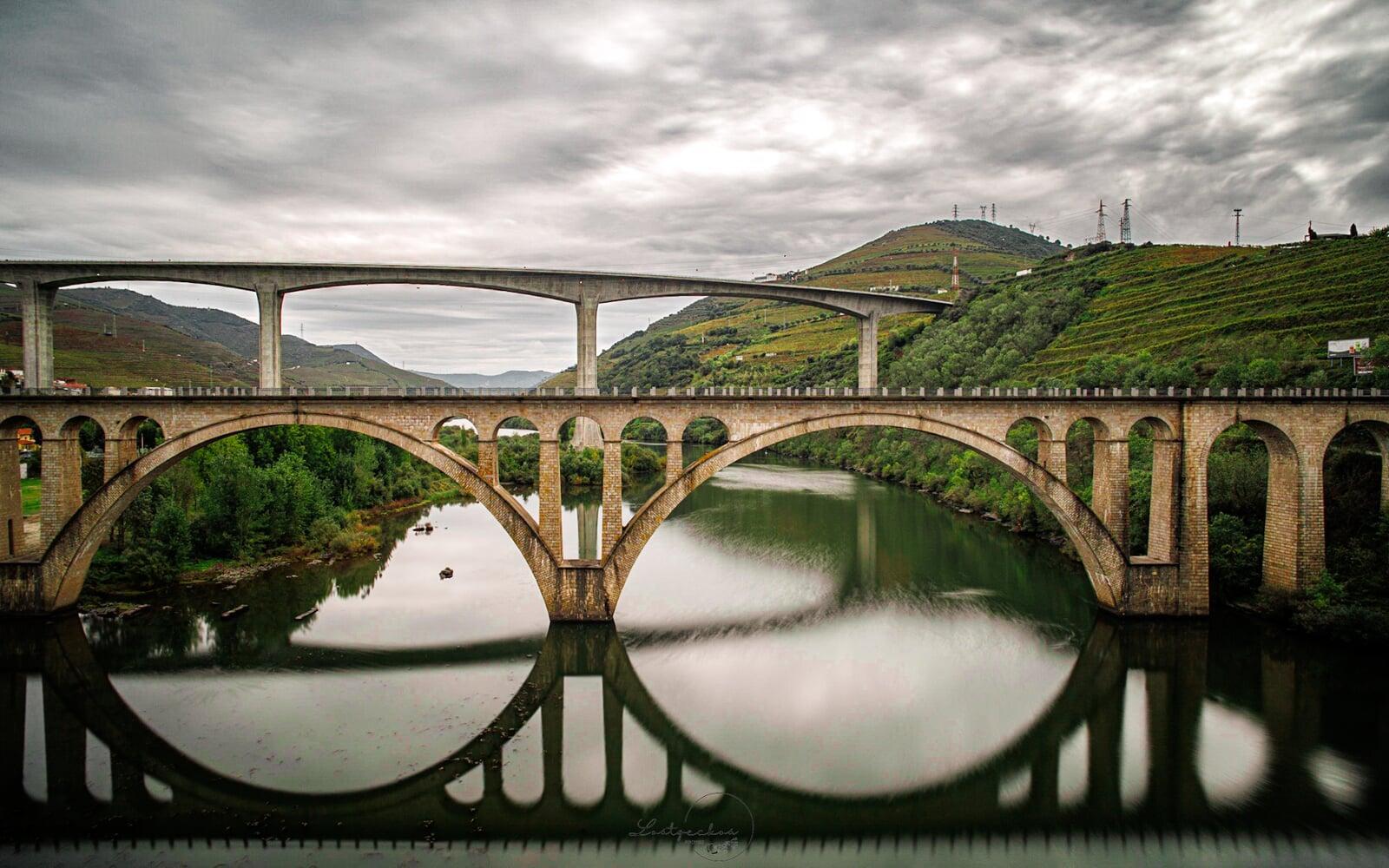
Fast forward to Pinhao, the heart of Douro valley wine region, is a small town with some gorgeous miradors (viewpoints). The town is also famous for it’s rail station. The train station is covered in blue-and-white azulejo tiles, showing grape harvests like it’s medieval Pinterest. Fun fact #3: Douro’s vineyards are hand-cultivated because the hills are too steep for machines. It’s hardcore, and it makes some of the best wines in the world.
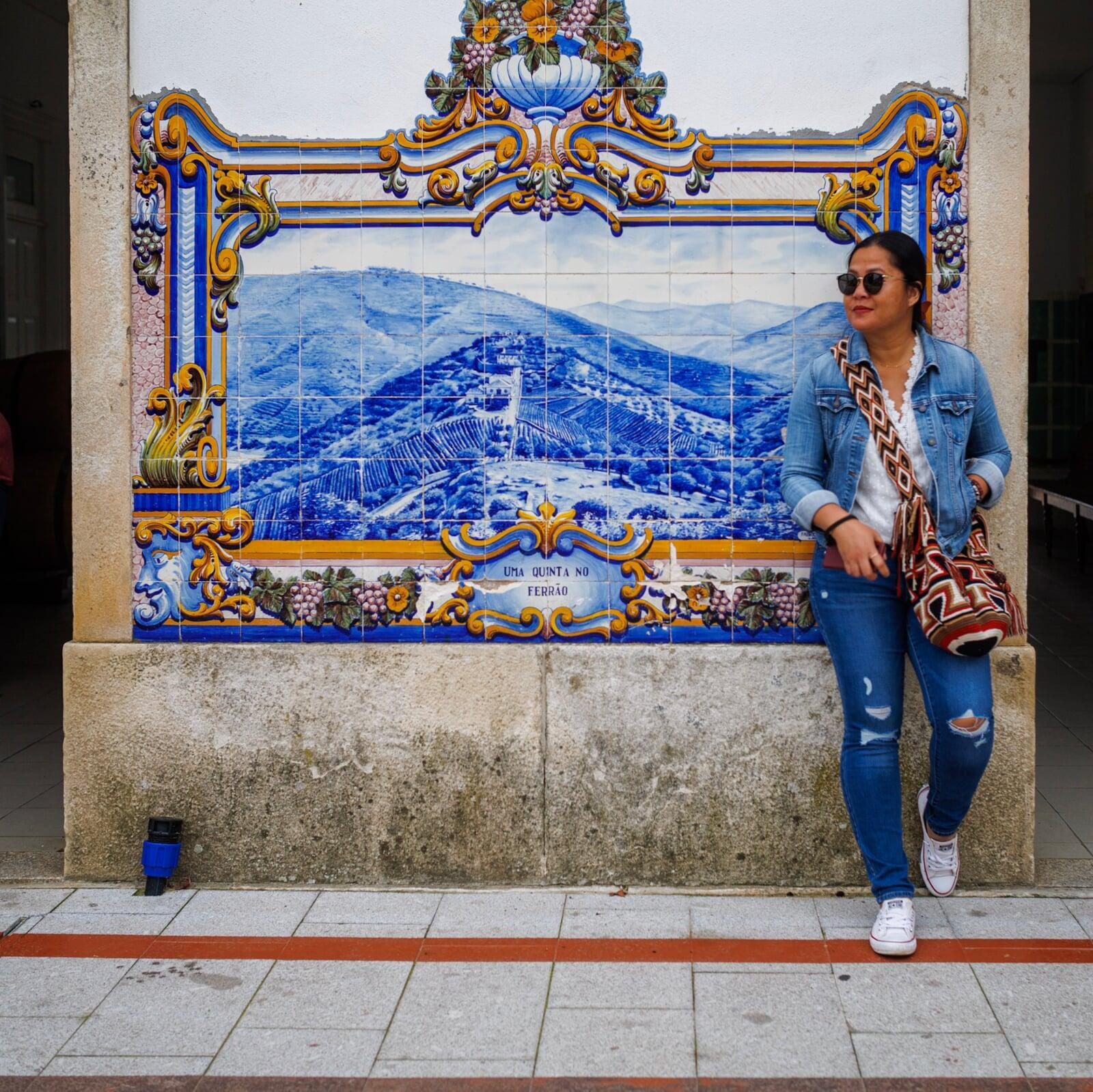

During summer and harvest seasons this town is no doubt a very-touristic area, however, in October when visited, the vibe was slightly calmer. Low season’s got the place half-asleep, with most restaurants shuttered, but we’re starving after our Fast & Furious audition. By some miracle, we stumble on Quinta de Tedo, a winery with an indoor terrace that’s open and ready to save us. It’s overlooking their vineyard, all rolling green and smugly gorgeous, like it knows it’s prettier than I’ll ever be. I wasn't mad, though—I was too hangry to care.

Funfact #4. Quinta de Tedo terrace bistro is Michelin-recommended. The terrace feels like a romantic hideout, with views that made me whisper “damn” under my breath. I felt slightly underdressed. The menu, although simple with only few choices was all drool inducing. The food was based on tradition with a sprinkle of magic of creativity of the chef. I don’t remember the name of our maincourses because I was too hungry to note it down or even take a picture of it, but it was no doubt delicious.

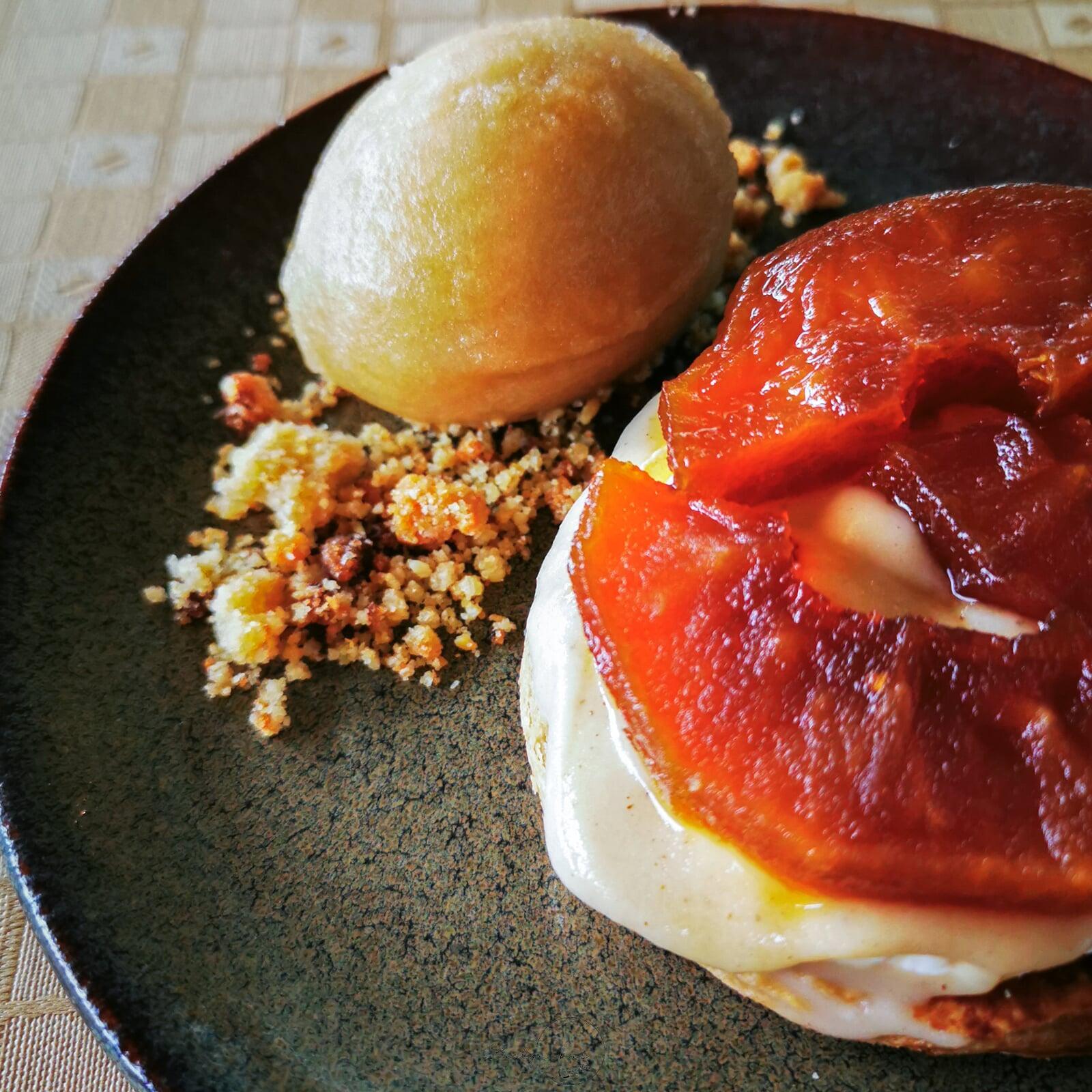

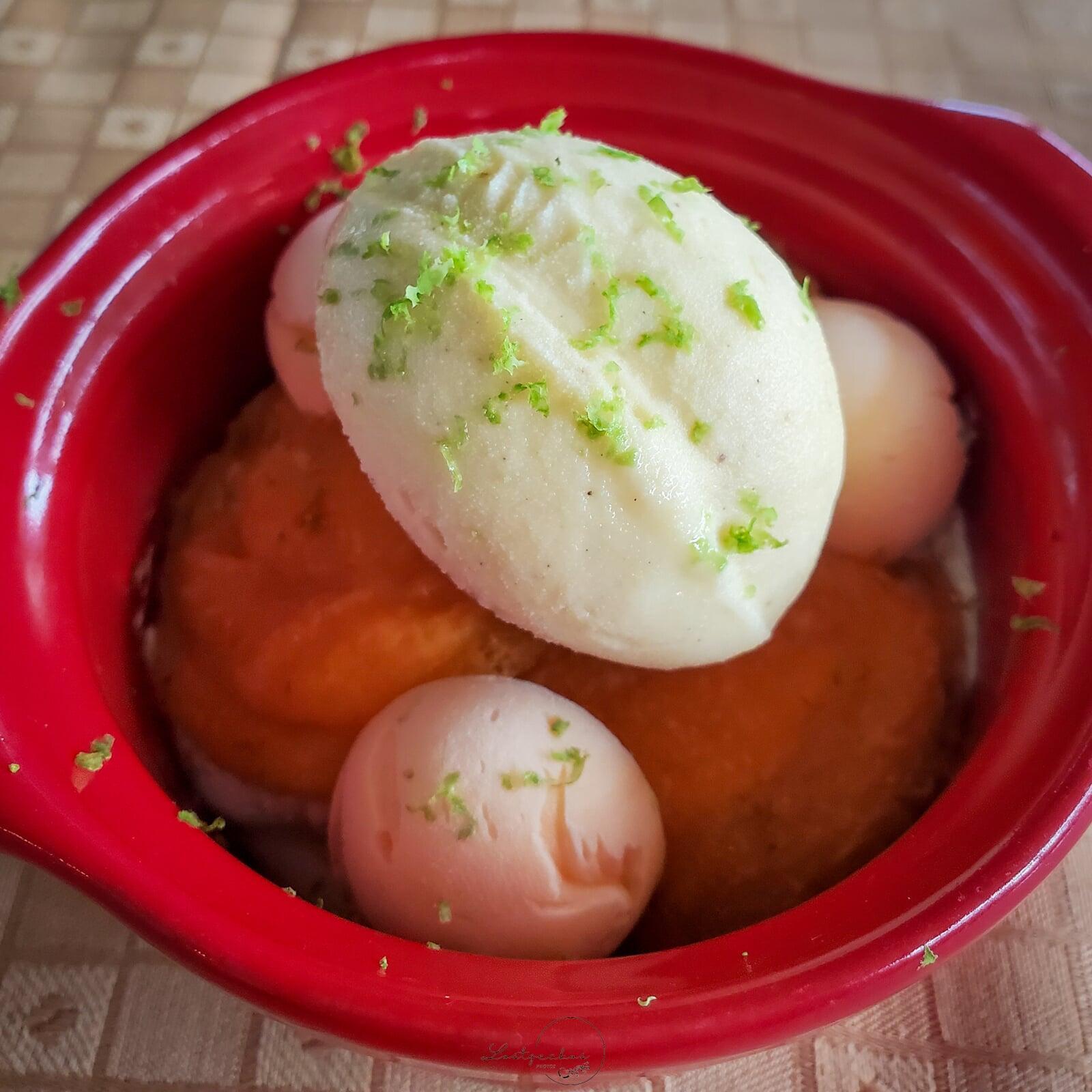
By the time for dessert, I was more composed, and could actually remember to take picture of my epic dessert; Everything Apple. They brought me a plate of apples—yes, apples—cooked every way I know: velvety apple ice cream, candied apple slices, apple butter cream I want to bathe in, and apple crumbles like there’s no other. It’s like the valley itself is saying, “There, there, you’re safe now.” My soul was purring, and I’m almost convinced I could live here forever—until I saw the bill.
After our late lunch, we headed to Sandeman’s Quinta do Seixo. Picking which vineyard to visit in this region is definitely tough, there are so many of them and each of them is pretty. We did check the World Best Vineyards beforehand, and Sandeman is one of them, plus it is a port wine brand Nico loves.
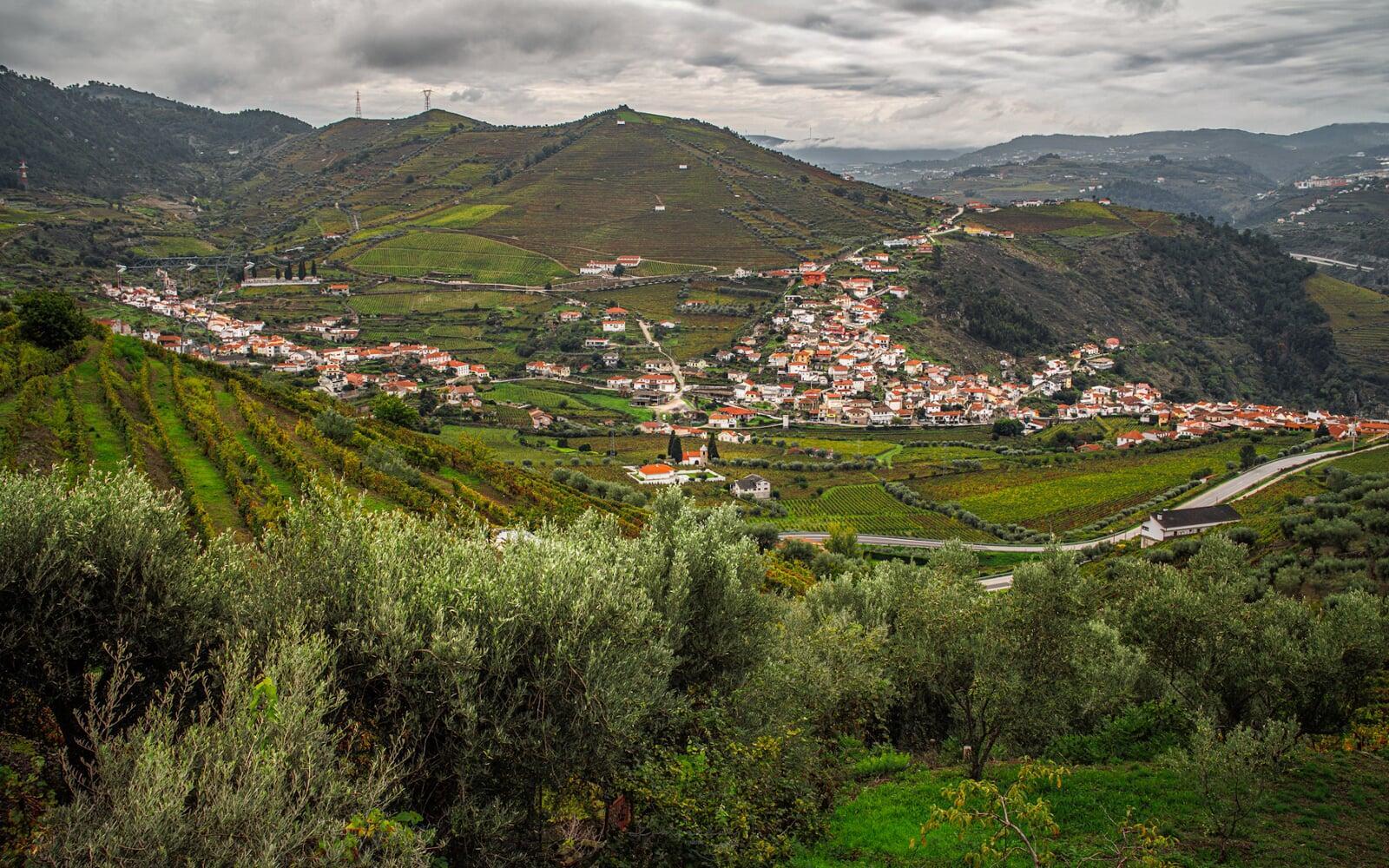
Sandeman’s Quinta do Seixo perched on a hill with it's enormous logo of Zoro-like figure overlooking terraces. The view from the top’s unreal—vines as far as the eye can see, and the Douro river glinting below. Getting there, though? A nightmare. The road was a tight, winding path that tested both Nico's driving skills and my ability to maintain calmness. Even in our microscopic Fiat 500, the road felt butt-clenchingly narrow, with blind turns that had me involuntarily whispering prayers to saints that aren’t even a member of my religion.
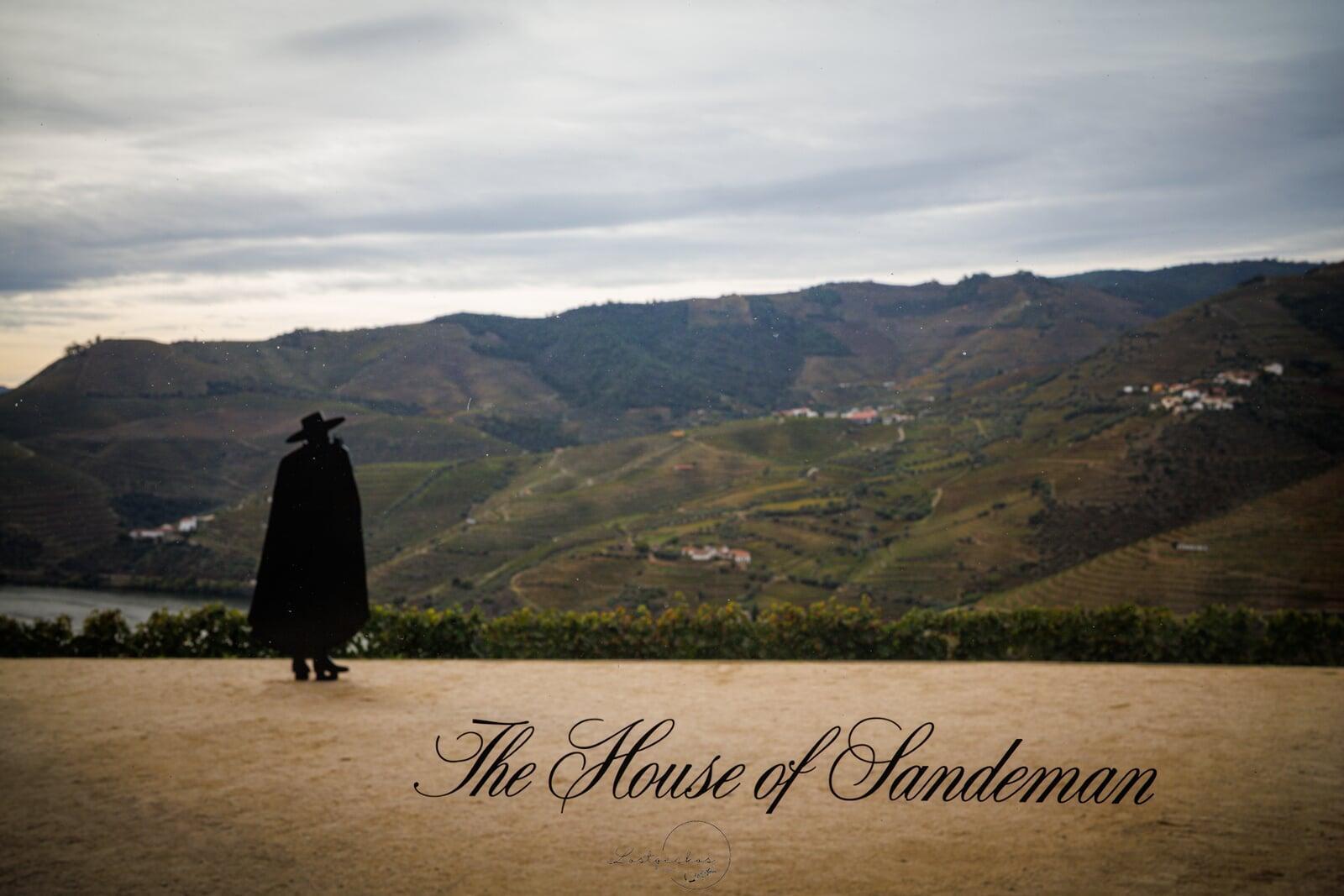
Anyway, as soon as we got on top, we saw the road we'd just conquered resembled a massive, twisted letter S—beautiful in its sinuous design. Then spot it.... dun dun dun....
A bus. A massive, multi-ton bus filled with wine induced happy passengers. Rolling down the same narrow road we'd just ascended, at full speed.
We froze, mentally playing out the inevitable standoff between our toaster size Fiat and that lumbering metal behemoth. What would we do? Play rock-paper-scissors to decide who would have to reverse a half-mile downhill? Measure the cliff drop to calculate our survival odds if we went offroad? I thanked every star we'd missed a head-to-head showdown by about five minutes, but the anxiety? Forever sketched in my travel trauma scrapbook.

The vineyard itself spans an impressive 100 hectares, and we really enjoyed the self-guided tour. There was a designated path with informative poles that explained the vineyard's history, grape varieties, and planting timelines. It was fascinating, educational, and surprisingly peaceful, a perfect activity to get my mind off of that bus scenario.
Funfact #5. You should book a visit to the winery (or any winery in the region) in advance. Visiting the vineyard is mostly available on the spot at most of the quintas around, but visiting their winery is another story. At this point we all knew who didn’t reserve the actual tasting bit ahead, ahem.... So all this way, but no barrels, no swirly glasses. However, not being able to visit their winery to learn how their wine was produced only means we need to come back again one day (and definitely with a tour guide). It’s all about silverlining, guys.

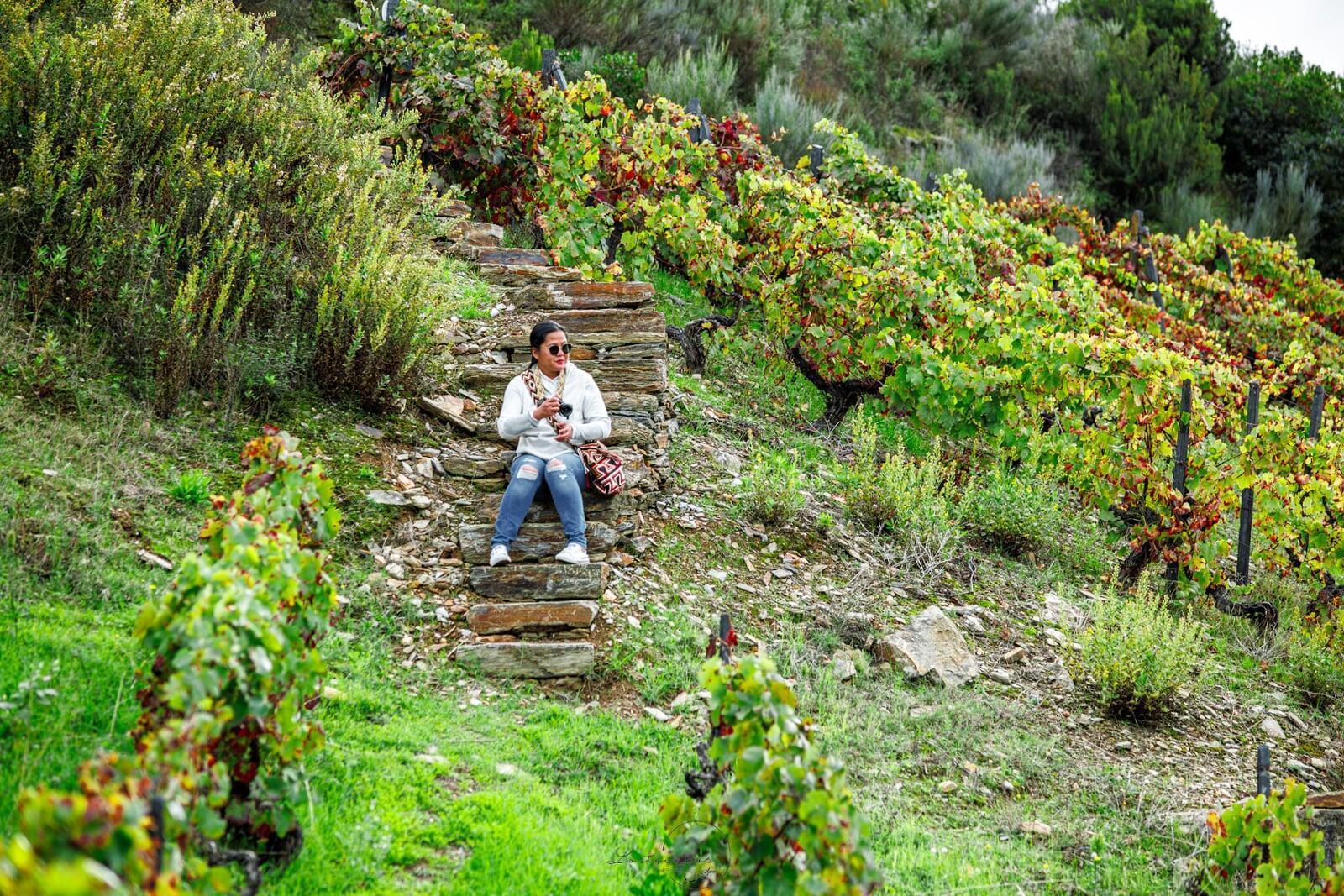
After taking a break on the patio lounge, we hit their shop directly, and I was expecting a quick grab-and-go, but instead, it’s like a wine library with shelves of ruby port, tawny port, with fancy labels I pretend to understand. Nico was in his element, explaining or more like warning, "the higher the fortified years, the more we wouldn’t afford the bottle," while I’m nodding like I know what “fortified” means. And felt impoverished at the same time.
For us, the real charm of Douro Valley wasn't in the port wine barrels we never got to see, but in the white-knuckled memories we made along the way. There's something poetically fitting about conquering death-defying roads stone-cold sober just to reach places literally designed for (slight) intoxication. Perhaps life, like good wine, is best when it balances the unexpected terror of narrow mountain roads with the sweet relief of making it to the top.
The best travel stories aren't always found in perfectly executed plans, but in those beautiful disasters where you look back and think, "We survived that... and somehow it was worth it."
